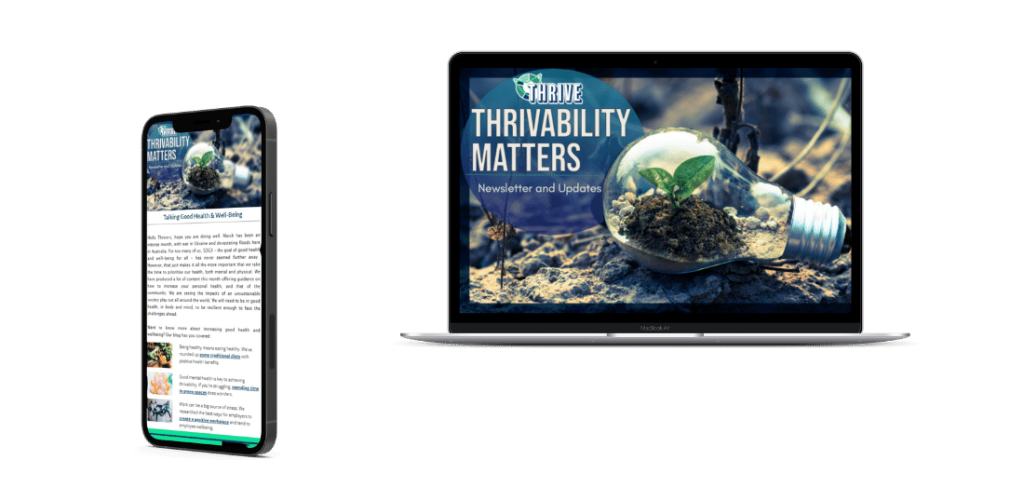Globalisation, urbanisation, and industrialisation are three important drivers of human civilization into the 21st century (J.H. Lee, et al., 2013). According to the Inter-governmental Panel on Climate Change (IPCC), Cities create an estimated 65% of global energy demand and cause 70% of global carbon dioxide emissions. Building and construction is recognised as a major factor in climate change. Therefore, the way that we build needs to change. Smart construction materials and technologies will build the sustainable cities of the future.
A Sustainable City Is A Smart City
More and more people are moving to cities in order to share in their economic benefits. A city’s attractiveness is directly related to its ability to provide basic services that support growth and build economic value. People look for cities that operate efficiently and purposefully. Those that make investments in human and social capital, and environmental health, drive sustainable economic development and produce a high quality of life. Thus, sustainable cities are smart cities (IBM Smarter Cities, 2012).
Smart cities show a wise management of natural resources, through participatory governance (Caragliu and Del Bo, 2009) and the application of modern technologies. They also realise social and economic benefits that go far beyond creating a healthier environment.
Retrofitting with Smart Construction Materials
Sustainable cities of the future must be built using ‘smart’ construction materials. In fact, smart construction materials are important before, during, and after the completion of construction. They should, therefore, be able to retrofit existing buildings.
To date, this possibility not really considered. However, retrofitting is now considered to be one of the best ways to create sustainable cities.
Often, tearing down an existing structure is more costly, economically and environmentally, than it is to retrofit. Therefore, we can adequately improve the structures we already have, less expensively and with fewer negative impacts on the environment.
So, What are Smart Construction Materials?
What are smart construction materials? And how do they help us build a sustainable city?
A ‘smart’ material, by definition, is an intelligent or responsive material. It is any material that can change its properties when manipulated by an external factor, and change back to its original form. so that its properties change in a controlled and reversible manner.
Here are some examples of smart construction materials:
Piezoelectric Materials
Piezoelectric materials are those that produce a voltage when stress is applied. Since this effect also applies in reverse, a voltage across the sample will produce stress within the sample. These materials allow structures to bend, expand, or contract when required.
Shape Memory Alloys
Shape memory alloys have the ability to regain a previous shape or size when subjected to thermal changes. These materials have applications in new civil engineering projects especially in the seismic protection of buildings.
Magnetorheological Materials
Magnetorheological (MR) materials are magneto-sensitive. External magnetic fields can control their properties. They are popular because the process is fast, reversible and ongoing. The uses for MR materials are vast, but AI and automotive industries can especially benefit. Today, MR materials are used in construction as shock absorbers in bridges and skyscrapers that are built in areas of high seismic activity.
Smart Concrete
Smart concrete is an intelligent composite that has properties different from normal concrete. It makes concrete stronger and able to be used as a sensor (Kamal, 2021). Loading and unloading causes it to lose and regain conductivity in real time. Smart concrete could be used in traffic-sensing systems, or to melt snow on highways or airfields.
Self-healing concrete is another type of smart concrete that can repair itself. This works by adding bacteria to the mix so that it will be present as cracks appear in the concrete. The bacteria reacts to water and produces limestone, which fills in the crack.
Thermoelectric Materials
Thermoelectric Materials help build devices that convert temperature differences into
electricity, and vice versa. These smart materials minimize electricity consumption in civil structures and houses. They also provide electronics with longer battery lives and performance, as well as improved energy conservation and storage. Thermoelectric Materials find applications in the following areas: Smart electric generators for electronics, Electricity sources in civil buildings, Smart cities and future buildings, and Energy storage devices.
Smart Energy Storage Materials
Energy storage involves the capture and storage of energy when supply exceeds demand (surplus), for use when demand exceeds supply (deficit). It is of particular relevance for renewable sources of energy. Typical energy storage systems include:
- Batteries (including lead-acid, Na–S, Li-ion, and flow batteries)
- Fuel cells
- Pumped hydro storage
- Flywheels
- Compressed Air Energy Storage (CAES)
- Supercapacitors
Each of these storage methods is currently at a different level of technical maturity. That means that more established technologies, like batteries and pumped hydro storage, tend to be more widely used (Hadjipaschalis et al., 2009; Chen H, 2009).
They also vary considerably when it comes to installation and maintenance costs, operational lifetime, and logistical and spatial requirements. The world is in increasing need of new and smarter ways to store energy. Therefore, as these technologies become more sophisticated, they start to acquire the label of smart material.
Smart Homes, Smart Cities
Smart materials make smart homes. Thus, smart homes make sustainable cities possible.
Interestingly, the notion of ‘smart’ or ‘intelligent’ structures comes from nature. The idea is that all living organisms possess stimulus-response capabilities (Rogers, 1990).
It is becoming more obvious just how these smart construction materials will change the way we build, and thereby drive the evolution of smart and sustainable cities. Also, new ideas are still being developed. Smart materials and technologies are providing many avenues for research.
A Sustainable City Needs Smart Water Conservation
Smarter technologies also provide a way to save and cut resource use. Smart water technologies, for example, reduce wastage and make cities water efficient. Like other smart technologies, smart water is “a suite of technologies working together as a solution”, to quote Ruthbea Yesner, IDC vice president of government insights and smart cities.
Smart water solutions monitor pipelines, pumps, valves, motors, and all the associated infrastructures for collecting, cleaning, and distributing water. Smart water tools can also be used to manage flooding, and for flood detection and water overflows.
“As we see increased risk to communities from severe weather which can result in compromised water quality. These solutions have more to do with detection, but then also physical systems to manage flooding.”
Ruthbea Yesner
In addition, the Internet of Things (IOT) will help unite water utilities by sharing new data and insights (such as real-time leakage alerts). It will also provide much more granular, timely, and accurate information elsewhere.
Many developed countries have implemented or are in the process of deploying smart water solutions. For example, solar-powered sensors in Solano County, California, detect water flow on farms in real-time. According to Wired magazine, farmers in this county send data from sensors to small satellites called CubeSats. They can then trade their water on a blockchain platform.
To give another example, Houston has partnered with Microsoft to modernize its infrastructure, and part of this project includes providing smart water meters to 500,000 water customers. These meters gather information on water usage every 15 minutes and, in the future, will give customers real-time leak alerts and conservation advice.
Smart water solutions save resources. Thus, they help safeguard public and environmental health, and contribute to water security. When global access to water is so limited, it is imperative that waste is minimised.
What are the Benefits of Living in a Sustainable City?
Living in green buildings improves environmental outcomes as well as quality of life. Green buildings that incorporate smart materials and smart solutions use less water, less energy, and make better use of other natural resources. In addition, they help to improve health and happiness levels in their environment.
They also can have a positive impact on the environment by generating their own energy or by increasing biodiversity. Structures can produce and store energy, and export to the grid. They can also provide a haven for local flora and fauna. At a global level, the building sector has the largest potential for significantly reducing greenhouse gas emissions compared to other major emitting sectors (UNEP, 2009).
The economic benefit of green buildings includes cost savings on utility bills for owners and households (through energy and water efficiency); as well as lower construction costs and higher property values for building developers. They also tend to increase occupancy rates, have the potential to create jobs and income, and reduce operating costs.
Green buildings also bring positive social impacts. Many of those benefits center around the health and well-being of people working in ‘green’ offices or living in green homes. For instance:
- Workers in green, well-ventilated offices record a 101 percent increase in cognitive (brain function) scores (Harvard T.H. Chan School of Public Health / Syracuse University Center of Excellence / SUNY Upstate Medical School, 2015.)
- Employees in offices with windows slept an average of 46 minutes more per night (American Academy of Sleep Medicine, 2013).
- Research suggests that better indoor air quality (low concentrations of CO2 and pollutants, and high ventilation rates) can lead to improvements in the performance of up to 8 percent (Park and Yoon, 2011).
Conclusion
Green building standards that integrate smart construction materials and technologies will build sustainable cities. Urban centres face significant sustainability challenges, and the threat of global warming is increasing the urgency for change. Today, a sustainable city must use new technologies alongside smart materials to transform its systems into smart solutions that optimise finite resources.
There is good reason to be hopeful about the world we may come to inhabit. New and existing buildings will become increasingly resilient, attractive, comfortable and functional thanks to the integration of smart materials.
Thus, it’s clear that technology and smart materials will have a vital role to play in building the society of the future. Smart cities will create better, more sustainable outcomes for people all around the world, improving quality of life, social interaction, and environmental health (J.H. Lee, et al., 2013). Maximizing the use of smart materials should be a top priority in our quest to build a healthier planet.


